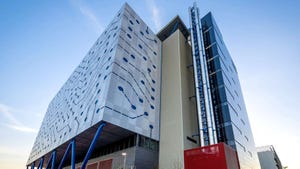Which UPS is Right For the Job?Which UPS is Right For the Job?
Considerations in choosing standby, line-interactive, double-conversion UPS designs - and new high-efficiency, multi-mode capabilities - for your data center
October 13, 2009
Traditionally, data center managers and facilities managers could choose from three UPS topologies: standby, line-interactive and double-conversion—offering widely varying levels of efficiency, performance and protection. The latest generation of double-conversion UPSs offers unique multi-mode capabilities. The UPS operates in a very high-efficiency mode unless power conditions warrant a switch to the higher protective level typical of double-conversion mode.
This Eaton white paper describes how various UPS topologies work and looks at the impact of operating mode on five key factors of UPS performance:
Maintaining voltage within tolerances
Transferring among modes without locking up IT equipment
Transitioning gracefully to and from generator power
Reliability and availability
Energy efficiency
Data center managers now have viable and remarkably cost-effective new choices with highefficiency, double-conversion, multi-mode UPSs that combine the best of single- and double-conversion topologies: exceptional efficiency plus the high protective level of double-conversion operation.
With best practices and the right choices in equipment, data center managers can reduce energy consumption by nearly 50 percent. That means that almost three-quarters of the power utility bill will fuel actual IT processing, compared to less than 50 percent of the power supplied to a normal data center today. To learn more download this white paper from Eaton.
About the Author
You May Also Like







